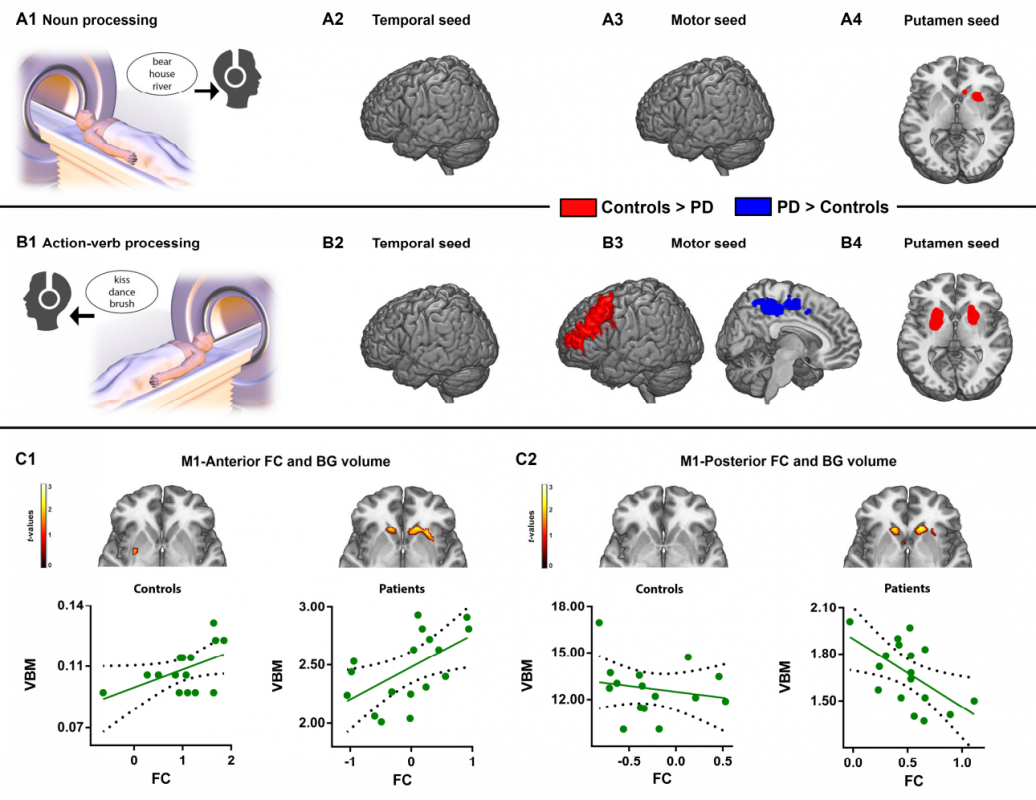Action verbs are critically embodied in motor brain networks. In Parkinson’s disease (PD), damage to the latter compromises access to such words. However, patients are not fully incapable of processing them, as their performance is far from floor level. Here we tested the hypothesis that action-verb processing in PD may rely on alternative disembodied semantic circuits. Seventeen PD patients and 15 healthy controls listened to action verbs and nouns during fMRI scanning. Using cluster-mass analysis with a permutation test, we assessed taskrelated functional connectivity considering seeds differentially engaged by action and nonaction words (namely, putamen and M1 vs. posterior superior temporal lobe, respectively). The putamen seed showed reduced connectivity within the basal ganglia in patients for both lexical categories. However, only action verbs recruited different cortical networks in each group. Specifically, the M1 seed exhibited more anterior connectivity for controls and more posterior connectivity for patients, with no differences in the temporal seed. Moreover, the patients’ level of basal ganglia atrophy positively correlated with their reliance on M1- posterior connectivity during action-verb processing. PD patients seem to have processed action verbs via non-motor cortical networks subserving amodal semantics. Such circuits may afford alternative pathways to process words when default embodied mechanisms are disturbed. Moreover, the greater the level of basal ganglia atrophy, the greater the patients’ reliance on this alternative route. These results offer new insights into differential neurofunctional mechanisms recruited to process action semantics in PD.
Keywords: Parkinson’s disease; motor cortex; language; semantics; fMRI.


